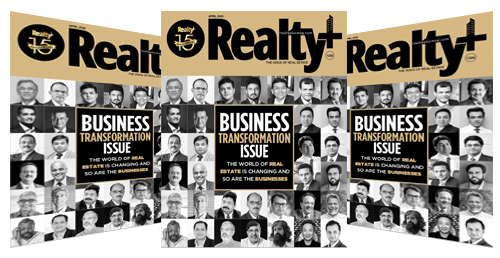Apoorv Vij, Director – Technical Development, GBCI sharing his sentiments said, “Climate change is evident in frequently occurring of heat waves, flooding, increase in ambient air temperatures and earthquakes across the world. So there is a growing conversation on how do we make our cities and buildings more resilient.”
Gurmit Singh Arora, National Chairman of CII – Indian Green Building Council & National President, Indian Plumbing Association concurred, “Humans have to live in conjunction with the nature. Having said that, construction is imminent, therefore green buildings are the only solution. Constructing green has proved to be good for our health as well for the mother earth.”
Jaya Dhindaw, Program Director - Integrated Urban Development, Planning, and Resilience, WRI India sharing a positive opinion stated, “India is the world's seventh most vulnerable country to climate extremes and I am delighted that the real estate business is waking up and talking about climate change, mitigation and resilience. Almost 75% of India’s infrastructure is still to be completed. So India has a great opportunity to build sustainably and lead the change.”
Suhasini Ayer, Principal Architect and Founder of Auroville Design Consultancy shared her views, “Design is more than just about materials; it is also about planning, invention, and teamwork. A lot of the efforts that go into making Indian cities are more sustainable at the policy level but when it comes to implementation, the idea is lost in on-ground translation.”
Namrata Mehra, Head of Design, & Customer Centricity, Vikhroli, Lead – Sustainability, Godrej Properties added, “As a private developer, we are listening to our customers. They now demand healthy living spaces and
thus all our properties are now green certified and have a sustainability management system. This is a big change over the years in the outlook of the industry and the consumer behavior.”
Nihar Chheda, Vice President Strategy, Prince Pipes and Fittings Ltd said, "I feel that mechanical engineering and plumbing (MEP) systems are the heart of each project and the solution providers in this segment can play a big role, starting from sustainable manufacturing to product technology for resource efficiency and addressing on-site difficulties."
Akhil Ganatra, Managing Director, Clancy Global expressed, “I believe technology and regulations are the two big factors in driving sustainability. With buildings getting technologically advanced, the efficient use of resources is being taken care of and the government regulations mandating green features are the right steps in this direction.”
SO WHAT’S NEXT
According to Suhasini Ayer, “Lack of collaboration is the biggest roadblock in constructing holistic developments. Cultural acceptance of design with community involvement is required.”
Gurmit Singh Arora said, “Monitoring our consumption is critical. What you can measure you can control.”
Jaya Dhindaw shared, “We need to build prototypes from disaster management plans to setting targets for air, water and green space management. These can then be tested and scaled up to larger city levels to achieve efficiencies.”
Nihar Chheda stated, “To encourage sustainability, we should develop products and solutions that make it easier for builders to adopt sustainability without jeopardizing their revenues.”
Namrata Mehra added, “The change is evident from EV charging stations within residential and commercial complexes to homebuyers preference of green buildings and open spaces to even engaging in community activities of growing own vegetables.”
Akhil Ganatra said, “Retrofitting old buildings across India can be a big step towards reducing India’s carbon footprint. From a perspective of sustainability, measuring existing asset’s performance will make the most impact.”
Apoorv Vij concluded, “Indeed, it is the building design and engineering that determines building materials, technology, carbon footprint, embodied energy, and lifecycle costs and they all can be minimized through climatic and context-based designing.”
“Develop financially viable solutions for long lasting sustainability initiatives adoption by all.” Nihar Chheda
“The net-zero movement is the way of the future for green buildings.” Gurmit Singh Arora
“We need a new paradigm shift in terms of professional collaboration.” Suhasini Ayer






.jpg)





